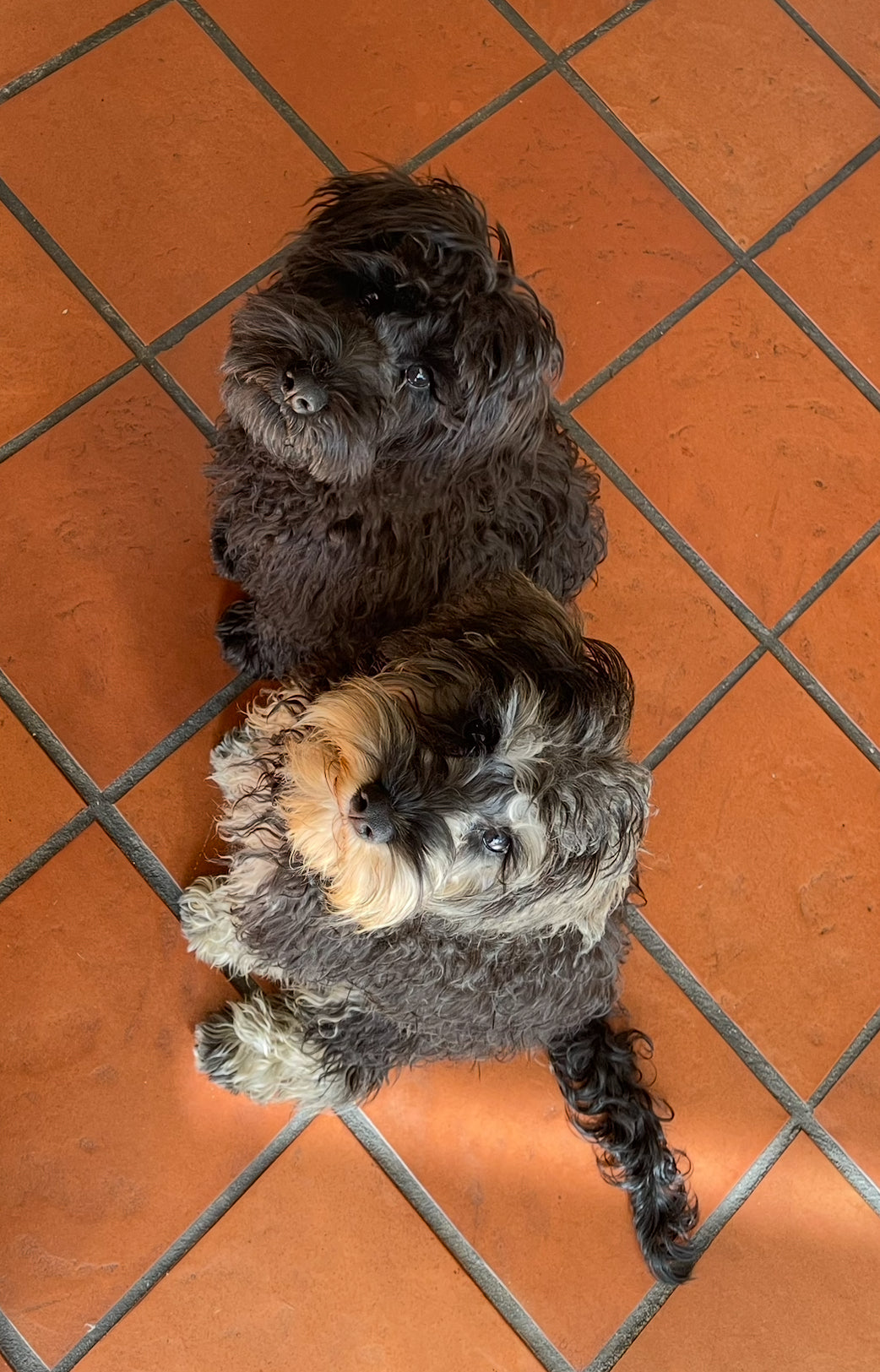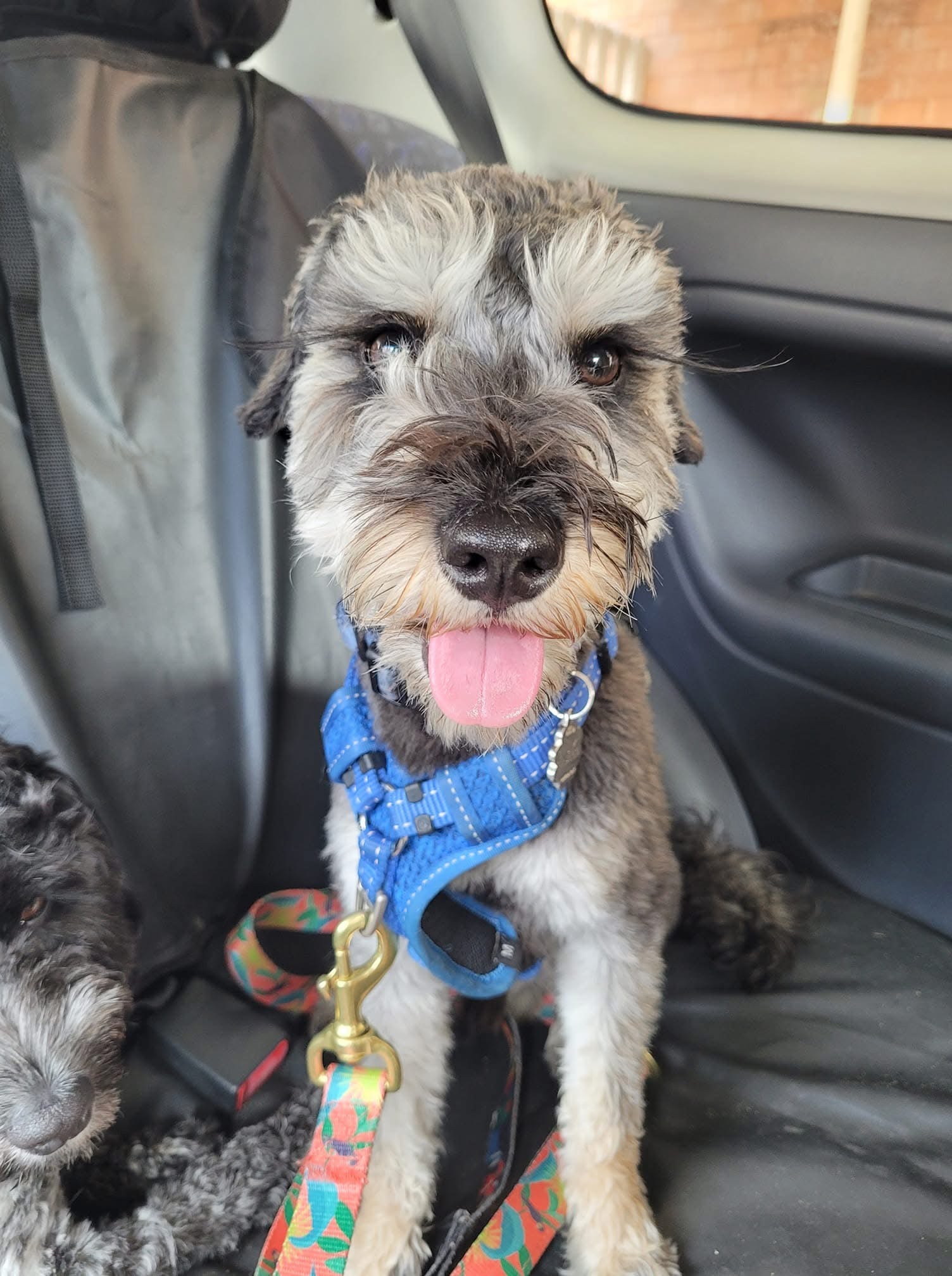My Summary of Schnoodle
I have been breeding Schnoodles since 2018 and they are becoming increasingly popular. The cross between a Schnauzer and the poodle makes a very loving, social, smart breed and I think most families who have bought a Schnoodle from me can agree. I have had some families mention their Schnoodle has the stubbornness of a Schnauzer, and other families who have trained their puppy within in a week of owning it to sit, roll, lead, and be fully toilet trained. Some of our Schnoodle families have also trained their puppies in obedience and scent competitions. Our Schnoodles had non shedding coats, some throw more towards a Schnauzer look with a more Schnauzer coat and the higher ears, some have the inbetween look on the poodle and schnauzer where the ears are set a bit lower, and they have more of a wavey coat. Usually their colouring also fades due to both of Schnauzer (a salt & pepper puppy is born darker and will fade), and the puppies that are born black also usually fade to a dark grey. We predominately breed first generations, and every now and than breed F1b's (mini schnoodle x mini pooodle). Compared to a Cavoodle, I think the Schnoodles are a little more more energetic- will suit homes with children to match their energy but have also made great companions, they will love their daily walks. They are also a bit more eager to be trained than a cavoodle.
Photos of Schnoodles we have bred here at Country Canine Co.
General Info - Schnoodle
Behaviour
Thanks to their parents, Schnauzer cross Poodles are smart, easy to train and fast learners. They are great family pets and love to play with children.
They are also known to get along with other household pets, such as cats, as long as they are introduced early in the dog’s life. Early socialisation of the Schnoodle puppy with other animals and humans is essential in the early training and development of the dog. However, if the Schnoodle tends to take more after its Schnauzer parent, it may not be a good idea to have small animals (such as rodents) in the same household, since it instinctively likes to hunt. Schnauzer-strong Schnoodles may also be suspicious and wary of strangers.
Size
Schnoodles can come in a range of sizes, depending on the variety of Schnauzer or Poodle that they're bred with. Mostly, they're either Toy, Miniature, or Standard like their Poodle fathers. Toy Schnoodles range from 25 to 30cm in height and weigh 2 to 4.5kg. Miniature Schnoodles range from 30cm to 38cm in height and weigh 5.8 to 9kg.
Grooming
As said before, a Schnoodle’s coat can be difficult to predict, it can be either wiry and long like the Schnauzers, or thick and curly like the Poodles. Shedding should not be too much of a problem with this cross breed; however this does not mean they are 100% hypoallergenic. They may shed low amounts, but will still need to be brushed to avoid matting, tangles and dirt. Brush them at least once a week. Schnoodles will also need their hair trimmed, their coats can get long and nobody likes having their hair in their eyes.
Basic canine health care includes checking his ears, brushing his teeth, and trimming his toenails. Check your Schnoodle's ears weekly for any redness, itchiness, dirt, wax, or bad odours as these may be signs of infection. The ears should be cleaned with a pH-balanced gentle cleanser to prevent infections from occurring. Canine oral diseases can lead to heart problems later in life, so gently brushing your schnoodles teeth two to three times a week is important to his well-being. The dog’s toenails should be trimmed at least once a month unless he is outside frequently enough that the nails wear down on their own.
Exercise
Schnoodles are energetic, playful and can be mischievous at times. They can adapt to living in a small home or apartment as long as they receive adequate daily exercise. A daily walk is recommended or 30-45 minutes of play time. Schnoodles can get bored easily from the same training techniques, so make sure to mix it up often enough to keep them entertained. Positive reinforcement training is the best way to teach your dog right from wrong. You should give your dog a treat or praise when they do something you want or when they stop an unwanted behavior.
Socialization is vital, without it you risk them becoming anxious around new dogs and people. Socialize your Schnoodle with other dogs, people and children. Make introductions somewhere that is neutral or take them to a puppy class. Invite visitors round regularly, show them new experiences and let them know it’s a good experience. Praise and treats would not go amiss during this process.
They are extremely intelligent, thanks to their parent breeds. This means they need a lot of mental stimulation. Take them for a walk somewhere they have never been before, new sights and smells really enrich their day.















